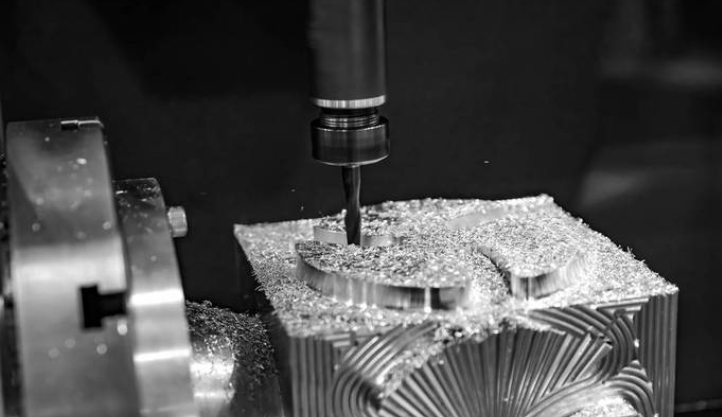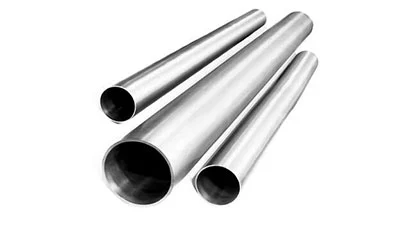Thank you for your
attention on Yesheng !
Titanium Plate Stamping Process - Raw Material Processing Methods and Matters Needing Attention
Before titanium products are formed, raw materials must first be processed. Titanium plate processing raw materials also use conventional punching, shearing, milling and sawing methods. Because titanium plates are strong, they are processed differently from other metal materials.
1. Cut
Raw materials or parts with linear shapes can be cut on a gantry shear. If you use an ordinary shear, carefully check whether the equipment can cut titanium plates. Titanium alloy plates with a thickness of less than 35 mm can be cut to the required size under production conditions. Thicker sheets can also be sheared if necessary measures are taken to avoid slipping during shearing. In order to prevent slipping, greater clamping pressure is required. On the edge of the sheared titanium plate, especially for thicker titanium plates, the linear deviation is 0.25-0.50 mm. This deviation is usually caused by insufficient rigidity of the cutting edge. This defect can sometimes be overcome by using thicker cutting blades. If the material blocking device is modified and digital display, fine-tuning and other technologies are adopted, the blanking accuracy can also be improved. The depth of cracks on the edge of the titanium plate does not exceed 0.4 mm and can be removed by grinding and filing with a grinding wheel. If shearing will cause cracks in critical parts of the part, a cutting method such as a band saw should be considered. When using a gantry shear to cut materials, the small gap between one side of the scissors is 2-3% of the material thickness, the shearing angle is 75-85 degrees, the back angle is 2-3 degrees, and the blade inclination angle on the bevel shear is It is 2 degrees to 5 degrees.
Custom Ti Titanium plates stock can also be processed using ordinary rolling shearing equipment. Circular shears can cut contours with a large radius of curvature (the smallest radius is about 250 mm). This method is used for titanium plates with a thickness of less than 2.5 mm. The current vibrating shears are only suitable for cutting titanium plates with a thickness of about 2 mm. The edges of the cut raw materials need to be filed or ground, and a filing allowance of more than 0.25 mm must be left. For thin materials (thickness <0.8 mm), when the quantity is not large, lever-type manual shears or hand shears can also be used to cut the materials.
2. Punching
Generally, raw materials of the required shape are punched out in one go on a punch. Usually for raw materials with simple shapes, the thickness of the processed raw materials is about 3 mm. The raw material mold for titanium plate processing should have sufficient rigidity, and guide pillars should be used to maintain the accurate relative position of the upper and lower molds. When manufacturing various flat parts or wool materials of various shapes, the small size of the titanium plate punching and the small radius of the connecting edges of the punched parts should meet the requirements.
In addition, you can also use a punching and shearing machine to cut out the material. During processing, use a small die to punch out crescent-shaped incisions according to the template and connect them to cut out the burrs of the parts, and then trim the key edges. The edge quality and accuracy are not as good as die punching. The efficiency is not high either. The advantage of punching and shearing is that the production preparation cycle is short, and it is often used for small batch production.

3. Band saw
The band saw has high processing efficiency and is convenient for production preparation, but it is not suitable for processing materials that are too thin. It is often used to cut titanium plates with a thickness of more than 3 mm. This method does not produce edge cracks, but its disadvantage is that it has burrs and must be polished after cutting. At present, it is mostly used for processes such as trimming, trimming and cutting ends.
Band saw cutting can be divided into three categories: friction, semi-friction and ordinary band saws. When the friction band saw is working, due to the high linear speed, severe friction occurs between the saw blade and the workpiece, and the temperature in the cutting zone is very high, thus reducing the cutting resistance of the material, improving the processability, and high efficiency.
The band used for sawing titanium should be of rigid structure and have enough power to maintain a constant speed during sawing; it should be able to automatically feed, tension the band saw and provide sufficient coolant. You can maintain a sharp edge and get stable results with a regular high-speed steel band saw. Saw blades with tungsten carbide blades are used to cut particularly thick materials, reducing burr height and depth affected by heat.
4. Milling
Use a milling cutter to mill a stack of titanium plates to the required shape, and the milling head moves along the milling template, or use a large CNC sheet metal milling machine to mill automatically. For stretched edges such as concave curves or flanges, polish them before forming to prevent cracks.
 English
English  日本語
日本語  한국어
한국어  français
français  Deutsch
Deutsch  русский
русский 















